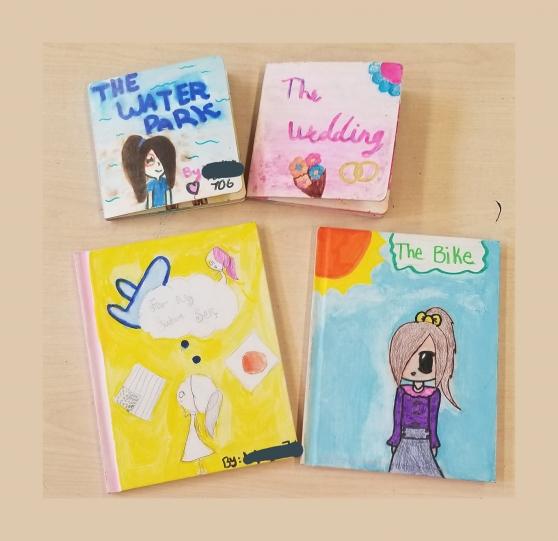
Students in Carolyn Tyner's 7th-grade ELA class at Sunset Park Prep in Brooklyn show off their personal narratives in the style of graphic novels.
I was skeptical last school year when my co-teacher suggested that we give a small group of our 7th-grade ELA students the option to write personal narratives in the style of graphic novels, a genre that has mushroomed in popularity in the past decade with children, teens and adults. I am a writer, not an illustrator, I thought. Grammar, punctuation and figurative language are my bread and butter! But I was interested in the challenge.
I ended up working with three small groups of students of different abilities: some comedic, some dramatic and some with serious drawing skills. I went home at night and looked through graphic novels by Victoria Jamieson, Raina Telgemeier and Maggie Thrash and took careful note of the storytelling techniques they used.
As a child who loved words and reading, I had paid little attention to the pictures in books. Now I zoomed in on the illustrations, studying the graphic novelist’s moves in great detail. I began seeing parallels between writing moves in text and artistic moves in drawings. Suddenly, I had an appreciation for the types of books I used to overlook.
I believe in the value of modeling the work for my students. So I worked on my own “graphic narrative” alongside them — an experience that was tedious but rewarding. Doing the work with my students helped me target points of confusion, find moments of clarity and reassess how everything would go. For example, as I began to draft my own graphic narrative, I needed to break it down and find parallels to the writing process. I also realized it would take much longer than I had anticipated because drawing goes “slooooow.”
To start, students looked at the text-only draft of their story idea. Then they sectioned that draft into “boxes,” a section for each picture of their graphic narrative. Then, we generated detailed picture ideas: What characters are in this scene? What are their facial expressions? What colors would match the emotion of this moment? What clothes could show my character’s personality?
We also considered how to format the boxes on our pages: a BIG moment needs a BIG box. A close-up can be used to show important objects or symbols. Captions can show the passage of time, a character’s inner thinking or background context.
Students had to be highly attentive to the details of their artwork and make tough decisions regarding text: Which dialogue is most important to this scene? What information do readers absolutely need that the pictures won’t give them?
Through this instruction, I was able to teach in accordance with state standards while also upholding student choice, a major framework of our instruction.
I had initially thought that graphic narratives would be an “easier” option for students. But I soon realized I was holding the graphic narrative groups to the same level of craft as students typing text-only stories. When it came time to show their work in a gallery walk, the graphic narrative students beamed as their classmates admired their work.
This process taught me the importance of getting on the ground with students, literally and figuratively. By reading graphic novels and going through the graphic narrative process with the students, I shared an important interest of theirs and saw them take intense ownership of their learning. Seeing themselves as graphic novelists made the work feel real. Telling their own stories through this art form made them feel empowered.
Carolyn Tyner is a 7th-grade ELA teacher at Sunset Park Prep in Brooklyn.